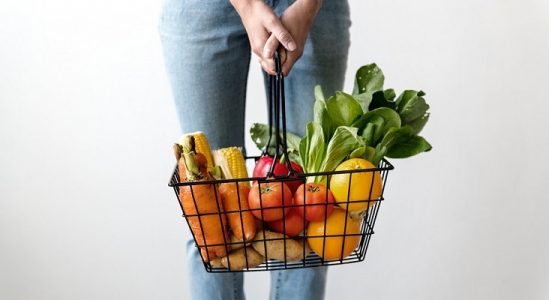It’s no secret: the way consumers shop is changing. And grocery is no exception.
According to Tim Madigan, Vice President eCommerce, Tyson, one out of every five consumers is projected to purchase grocery items “outside the store” within the next several years. For retailers, this means putting more focus on developing digital channels that can handle increased consumer demand. Following demand calls for new strategies for new revenue streams. For analysts, understanding which companies are ahead of the curve, and how the industry is shifting, is essential.
AI-powered shopping, coming to a Whole Foods near you?
Earlier this week, the Wall Street Journal reported that Amazon was testing its cashierless checkout system for possible expansion into larger stores.The technology first debuted in January 2018 at Amazon Go, the retailer’s first grocery storefront in Seattle, Wa. Amazon has since expanded Amazon Go to seven retail locations across Seattle, Chicago, and San Francisco.
Amazon’s technology uses AI-powered visual recognition and sensors to track items and tie them back to the shopper purchasing it. Shoppers simply scan their Amazon mobile app upon entering the store to get started.
According to the Wall Street Journal, Amazon did not explicitly state its long-term plan for expanding Amazon Go, or if it would be implemented at Whole Foods, which Amazon acquired in June 2017.
But that doesn’t mean Whole Foods hasn’t already reaped the benefits of Amazon integrations. In a Q3 earnings call, (log in to AlphaSense to read more) Amazon Senior VP & CFO Brian T. Olsavsky outlined some of the eCommerce retailer’s expansions into the brick-and-mortar space:
“We started to have greater expansion of our grocery delivery out of Whole Foods using Prime Now. We’re now in 60 cities that’s — in the U.S. giving customers delivery in as fast as an hour, thousands of great organic products from Whole Foods. We’ve also expanded grocery pick up, and that’s available in 10 cities, so the customers can pick up at the Whole Foods store. You’ll see that we’ve started to tie Whole Foods into Alexa. You can order — you can build your cart using Alexa and then checkout using the Prime Now app. So there’s going to be a lot of, as you say, omnichannel overlap, especially in the grocery business.”
The rise of ‘Omnichannel Overlap’ in the grocery sector
Let’s focus on that last sentence for a second. Just what is “omnichannel overlap,” exactly? In retail, it’s a way to describe the convergence of digital mediums with the traditional brick-and-mortar shopping experience. As shoppers “go mobile,” retailers are figuring out ways to seamlessly integrate digital experiences with physical ones. The goal? Ultimately driving profits across the board.
It’s clear in Olsavsky’s quote above that Amazon is considering a number of emerging omnichannel trends as part of their growth strategy — moving swiftly on mobile, and capitalizing on their voice assistance capabilities with Alexa integrations. While Amazon could be considered a pioneer, other large retailers are also taking notice, and taking their own strides to keep up in the omnichannel race. Here’s a few examples:
Walmart eyes automation, mobile delivery
Walmart, a retail behemoth, is eyeing a more aggressive stance on process automation and mobile pickup functionality. In a Q3 earnings call (log in to AlphaSense to read more), CEO, President & Director Douglas McMillon outlined their plans:
“We’ve expanded online grocery pickup, launched Mobile Express Returns, and we’re testing automated pickup towers and same-day grocery delivery. We’re also learning how to automate some routine functions in our stores, like scanning for shelf level out of stocks and modular accuracy. We’re leveraging our unique assets and financial strength to better serve customers and accelerate growth.”
Target expands same-day delivery with Shipt
In late 2017, Target announced its acquisition of Shipt, a mobile grocery delivery service startup.
In Target’s Q3 earnings call (log into AlphaSense for more), CEO & Chairman Brian C. Cornell outlined the retailer’s approach as fully integrated, combining Shipt’s capabilities with improvements to staffing, and innovation of brick and mortar locations:
“When we analyze the drivers of our strong traffic and sales growth, we see the benefit of all the strategic initiatives we’re pursuing, including: Our remodel program; efforts to rejuvenate our portfolio of own and exclusive brands; the rollout of new fulfillment options focused on delivering ease and convenience, including Restock, Drive-Up and personal shopping in as little as 2 hours with Shipt; investments that allow our stores to fulfill an increasing number of target.com shipments, allowing us to deliver quickly while also controlling costs; new digital capabilities to make shopping faster, easier and more inspiring…investments in hours, wages and training for our team to further differentiate the shopping experience in our stores.”
Making sense of grocery trends
Grocery retailers have started to shift strategies to keep up with growing consumer demand for better digital shopping experiences. Into 2019, new technology, like automation, machine learning, and voice, pose new potential for continued innovation. Early adopters are charting the course, and for analysts, understanding their successes and failures could pave the way for projecting future profits down the line.
Want to learn more about how to improve your market intelligence? Download our guide Better Market Intelligence With Smart Search to learn how Augmented Intelligence can grow a proactive market intelligence strategy, allowing you to access relevant, high-quality data points with speed and efficiency.




